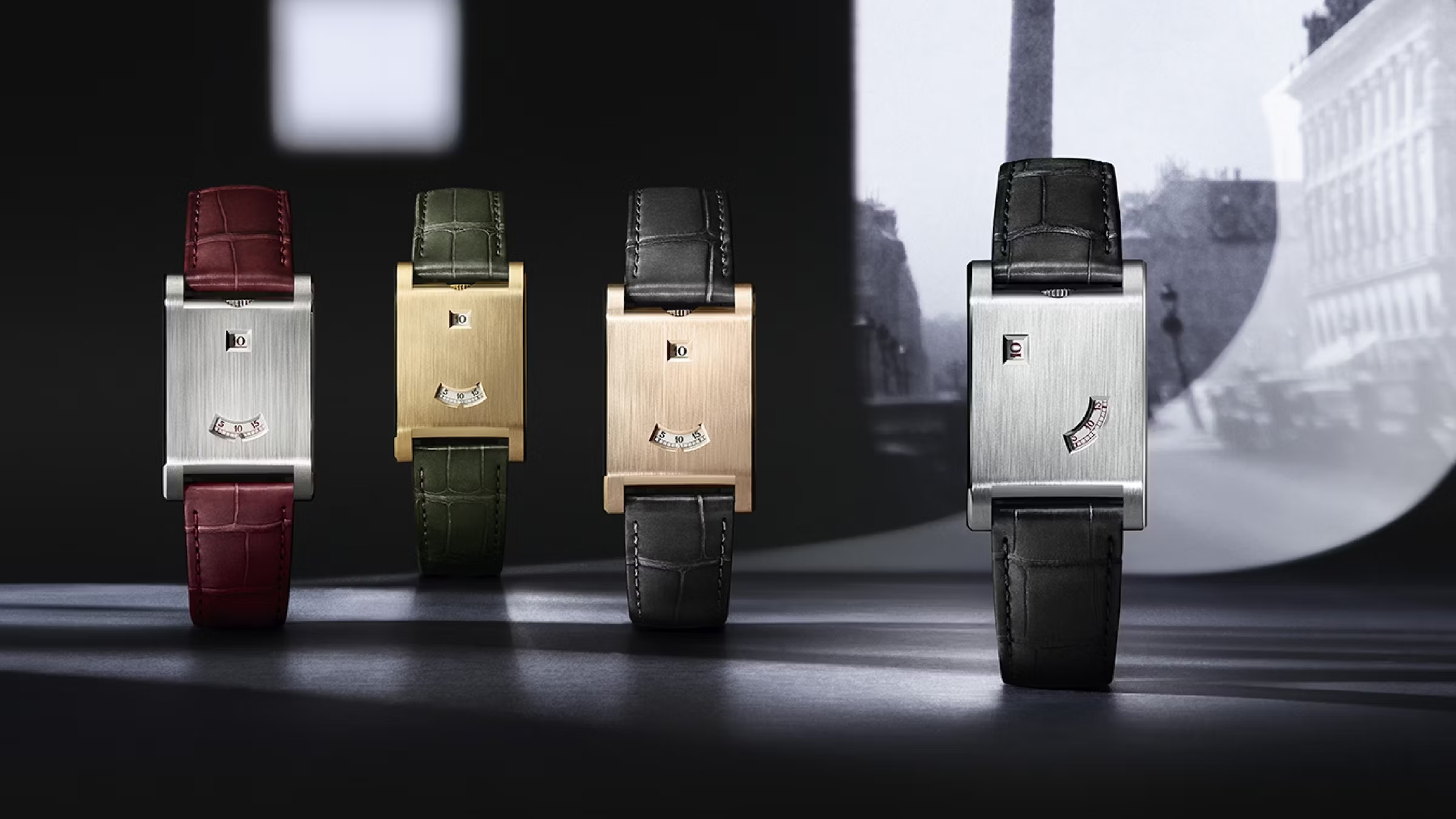Jumping hours, guichets and visual theatre: The biggest trend from Watches and Wonders explained
Miniature window displays replaced traditional watch hands at this year's Watches and Wonders fair.


Of all the elements associated with a watch, the ‘big hand, little hand’ concept is about the most basic. We are so primed to understand the relative angle of these two lines that some independent watchmakers — like Ressence or H. Moser & Cie — do away with practically everything else. But with all orthodoxies there is inevitably a counterpoint, and this year has seen a real resurgence of watches designed with no hands whatsoever. At the Geneva watch fair Watches and Wonders, the horological world’s annual get-together where every significant brand shows its wares, watches with miniature window displays were the hot thing everywhere you looked, from Cartier to Bremont.
I say resurgence, because the idea is not a new one. It made its original appearance on pocket-watches of the 19th century, particularly those produced by IWC and known as ‘Pallweber’ models after their original inventor; the style then enjoyed a renaissance during the Art Deco era, when watchmakers combined their new and exciting wristwatches (in all manner of shapes) with window-led displays, the geometric form of case and porthole combining neatly. Cartier was among them, which will be no surprise to anyone familiar with its pioneering approach to design, and this year its flagship launch was a revival of the Tank à Guichets, a version of the classic Tank Louis Cartier with its dial completely enclosed in either gold or platinum, save for two small apertures through which one can read the hour and minutes.
A note on terminology: ‘guichet’ is usually translated as ‘window’, which might jar with anyone whose schoolday French included phrases such as ‘la fenetre de ma tante est ouverte’ — but the translation is less in the sense of a window in a building and more that of a ticket office or cashier’s counter window. Such watches are also usually referred to as ‘jumping hour’ models, because while the minute display rotates consistently in the same way as a hand would, the single numeral displaying the hour remains static for almost 60 minutes and then (depending on the engineering below) either switches over gradually in the space of a few minutes, or more commonly ‘jumps’ abruptly at the top of the hour. There’s a level of visual theatre that appeals to watch geeks.

Earlier in the year, Louis Vuitton kicked off the trend with its Tambour Convergence (left), an unashamedly Deco style that stacked the hours and minutes together, leaving the rest of the case free — in the platinum model, it seized the opportunity to set it with diamonds. At Watches and Wonders some brands followed Cartier’s approach of a solid case with ‘guichets’, like Bremont’s surprising Terra Nova Jumping Hour in bronze, while others took a more conventional tack, incorporating a jump hour display into a dial, underneath a sapphire crystal as usual. Among these, Chopard stood out with its magnificent L.U.C Spirit 25, whose dial was created using straw marquetry in a hexagonal pattern, while Gerald Charles marked 25 years of its brand with a limited edition whose dazzling dial almost outshone the discreet hour display at 12 o’clock.
Perhaps the most charming of all was Jaeger-LeCoultre’s Reverso Tribute Nonantieme ‘Enamel’, which combined an ornate jumping hour display with a 120-degree ‘smile’ for the minutes and housed them both in a deep blue and gold enamelled display of the night sky, giving the overall effect of a wonderfully anachronistic astronomical device. Which, in a way, it is.
Exquisite houses, the beauty of Nature, and how to get the most from your life, straight to your inbox.
Chris Hall is a freelance writer and editor specialising in watches and luxury. Formerly Senior Watch Editor for Mr Porter, his work has been published in the New York Times, Financial Times, Esquire, Wired, Wallpaper* and many other titles. He is also the founder of The Fourth Wheel, a weekly newsletter dedicated to the world of watches.
